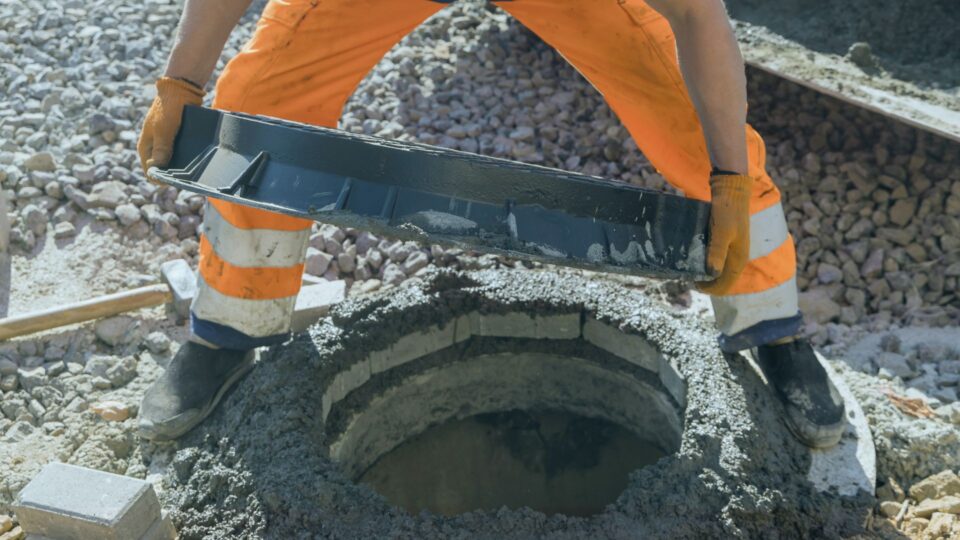In 2019, a worker involved in the clean-up of a sewage spill at a popular West Sydney park died due to exposure to raw sewage material. The waste management industry is hazardous, and preventative measures should be taken to improve worker safety.
Read on as we discuss the dangers of sewage odours, along with the best practices for managing odours within the sewerage industry.
Why is sewer gas dangerous?
Any waste management service must take steps to mitigate contaminants in the air. Here are some of the negative health consequences of sewer gas:
- Toxicity – there are many harmful and toxic gases emitted by sewage. Hydrogen sulphide, methane, ammonia, and carbon dioxide can all cause asphyxiation and respiratory distress in large concentrations.
- Poisoning – hydrogen sulphide is a highly toxic gas that can cause nausea, headaches, and even unconsciousness and respiratory paralysis in large quantities. Inhaling hydrogen sulphide can have lasting effects on the central nervous system.
- Explosion risk – when methane accumulates, it presents the risk of explosions with even the tiniest ignition source. If the methane is inhaled, an explosion can cause severe burns in the respiratory system.
- Bacterial and viral contamination – sewer gas may host various bacteria, viruses, and pathogens that can lead to serious infections and diseases. Inhaling these pathogens can lead to respiratory, gastrointestinal, and systemic health issues.
To comply with health and safety regulations and to prevent deaths on waste management sites, it is essential to mitigate the concentration of sewer gas in the air with odour control.
How to manage industrial odour control
Proper ventilation is required to manage industrial odour removal. Below is a list of the top ventilation solutions for use in a waste management environment.
Roof fans
There are several types of roof fans that you can use to exhaust the sewage fumes from your waste management facility. Here are the types of roof fans available:
- Vertical discharge roof fan – a vertical discharge roof fan creates an upwards airflow to remove toxic fumes and allow air circulation.
- Curb base hooded roof fan – the curb base hooded roof fan is fitted onto a rooftop curb to provide exhaust and ventilation. The hood prevents rain and debris from entering the building.
- Profile base hooded roof fan – this profile fan can be installed on flat or sloped roofs and is discreet. It removes odours, heat, and contaminants from the inside of a building with powerful motors and fan blades.

Axial fans
Axial fans move air in a parallel direction. The air enters the inlet and the outlet in the same axial direction. They are highly efficient at moving large volumes of air at low pressure. They are ideal for providing ventilation, air circulation, and airflow. Axial flow fans come in various sizes to meet multiple applications.

Wall exhaust fans
Wall exhaust fans are typically installed on exterior walls and used for extraction. They have a sleek and discreet design to meet space requirements while providing ventilation. You will normally find a wall exhaust fan in a residential, commercial, or industrial application.

Backward-inclined centrifugal fans
A centrifugal fan provides exhaust and slanted blades to provide airflow generation and pressure rise for environments that need high static pressure. The design reduces noise levels and minimises particle buildup on fan blades for more efficient decontamination.

Which fan is best for sewerage odour management?
The best fan for sewerage odour management will depend entirely upon your facility’s size and the amount of sewage housed there. To understand your ventilation requirements, you must know the ideal air exchange rate for sewage facilities, around 10 changes per hour.
You should also understand the size of your facility and the number of fans required to maintain this rate. Speaking to a ventilation expert at Fanquip will help you to understand which fan best suits your facility’s layout, along with the number of fans you require and their ideal placement location.
Choose Fanquip for odour management solutions
Odour management is essential in sewage treatment plants. It prevents fatalities caused by toxic fumes and mitigates the risk of explosions. By installing ventilation fans, you can implement effective odour management and maintain the required air exchange rate.
At Fanquip, we provide solutions for odour management and can discuss your ventilation strategy with you, helping you understand your needs. Contact us today to learn more about our services.
